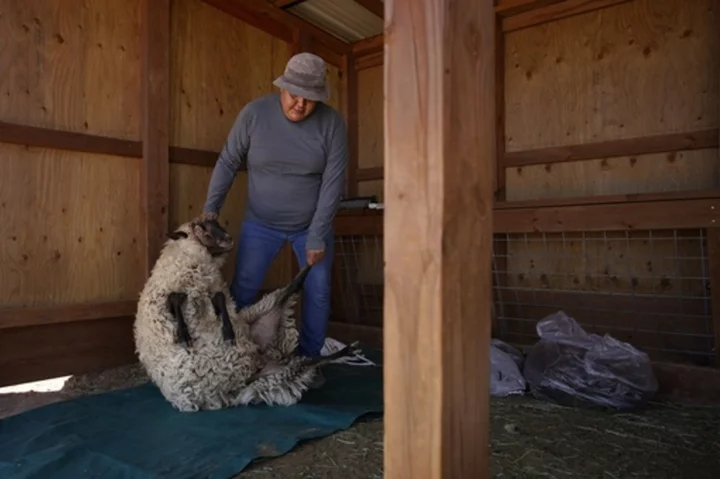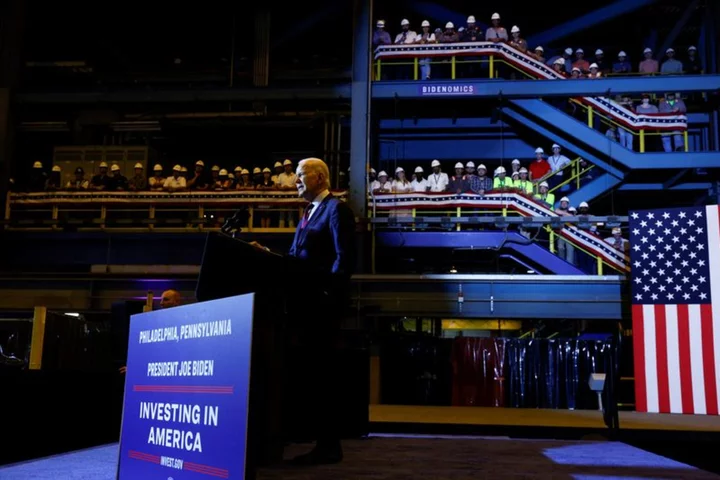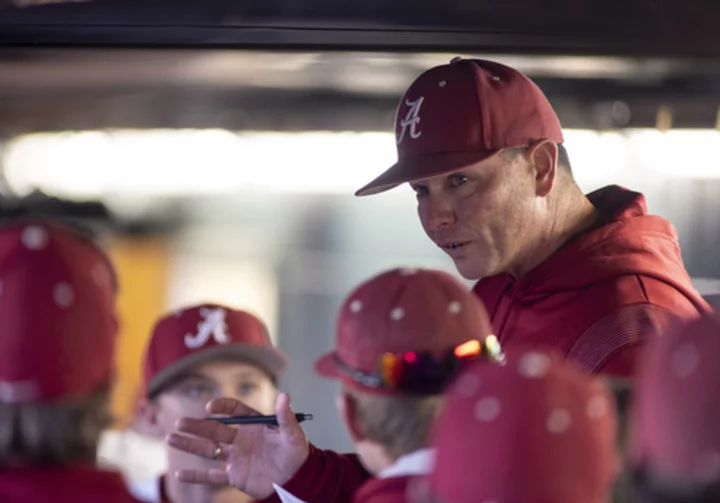GANADO, Ariz. (AP) — Growing up in Ganado, a small town in Navajo Nation in eastern Arizona, Nikyle Begay always wanted to visit their grandmother's sheep.
Begay's parents had grown up raising livestock, and their dad had always wanted to raise sheep and cattle, but it was a hard way to make a living. In a family with seven children, Begay and their younger sisters were the ones who felt drawn to the sheep. And as a kid, Begay, who is non-binary and uses the pronoun they, always felt connected to their grandmother. While she worked, carding and spinning wool outdoors, Begay would play with Hot Wheels cars, carving little roads in the sand and clay.
"You can never say that you’re broke, that you’re hungry, that you’re bored, that you don’t know what to do, because you have two hands," Begay remembered their grandmother saying while teaching them to weave.
It was a sentiment passed through the generations, one Begay says their great-grandmother had proven by winning the family's first truck, a 1950's Chevy, in a raffle as part of a local sheep shearing contest. By the time Begay was 13, they had gotten involved in local Future Farmers of America programs and started keeping a flock.
When Begay grew up, they moved to Tempe, outside Phoenix, and worked for an electronics manufacturing company. Then the company shifted its operations, and Begay had the option to move to California or Florida. They were torn about the decision, and felt disconnected and lonely.
So Begay came home. It was quiet out here, not loud like in Tempe, making them feel more grounded. Upon returning, Begay learned that their grandmother had, in a Navajo custom, buried their umbilical cord in a sheep corral in the hopes that they would carry on the tradition and become a shepherd and a weaver.
“My heart was always just with the sheep,” they said.
Now 34, Begay has 15 sheep. When it’s time for shearing, they tie their hooves into place and cut the wool by hand with a special pair of scissors. The sheep lies down, calm, as Begay pulls up a section and snips deftly with even strokes. If the sheep gets startled, they soothe them with a soft word or touch. Begay knows each sheep by shades of brown or white, by their horns and by their personalities—assertive, quiet and occasionally sassy or mean.
Begay's family used to have around 150 head, but that isn't possible now. A highway fence has been put up, and the grazing limits are lower. Erosion is common, because more than two decades of drought has meant fewer native grasses to hold the land in place when it does rain. The drought means spending more on feed in the winter. And traders no longer place as high a value on Navajo hand-weaving as they once did, because many, though not all, aspects of weaving can be accomplished by machine. In some ways, the art is dying.
Begay is determined to help stop that from happening. In 2020, they started Rainbow Fiber Co-Op, a wool co-op intended to protect ancestral flocks on Navajo Nation and to help other Diné (Navajo) shepherds get fair prices for their wool, especially wool from the Navajo-Churro breed prized by weavers around the world for their range of natural colors and quality of the fibers.
During the pandemic, they started teaching weaving classes on Zoom, which continue to this day each morning. And Begay is vocal about the importance of sheep and the art of weaving. Their Instagram, @navajoshepherd, shares weaving projects, historical and cultural moments of significance, and of course, pictures of the furry friends they’ve bonded with.
It also provides a window into the cultivating of wool for the purposes of weaving, which is a multi-step craft that requires lots of specialized knowledge. Some of the co-op's wool is processed commercially, but Begay knows how to do every part by hand.
After shearing, Begay uses a long platform made of chicken wire to sift out bits of wool that aren't the right length. They wash the wool by soaking it in water and a bit of dish soap.
Next comes carding — brushing the wool out on a rotating drum to prepare it for making yarn — and sometimes dyeing, a task Begay often takes to California where their best friend has the garage space for it. And finally, there's spinning, which Begay makes look easy — evenly feeding tufts of wool onto a roll that turns with the gentle up-and-down motion of a foot pedal.
Then they weave.
In front of a loom at the dining room table, Begay moves long sticks up and down between the fibers, threads brightly colored strands and uses a weaving comb to lock each line of a project into place. Begay’s current double-sided work, which has completely different colors and patterns on each side, requires deep patience — it can take hours to finish even just a small segment. Begay says many Navajo weavers have special ceremonies to cleanse themselves of the frustration and strong emotions that accompany the weaving.
“They say with weaving, you’re intertwining yourself with every weft,” Begay said.
Like keeping sheep, weaving is an emotionally potent practice for Begay, who describes occasionally having to return from mentally dark places. They sometimes wonder whether keeping the tradition alive even matters in the face of big forces like climate change, drought, and modern development. But Begay also thinks that by raising awareness, combined with simple solutions like adding interested young people to the grazing permits some elders might not be using, there’s hope for the future.
And Begay feels the satisfaction of fulfilling their ancestors’ prayers. They describe a day in 2020, when many of their family members were sick with COVID-19 and wildfire smoke had painted the morning sky with a choking orange sunrise. It felt apocalyptic. Distraught, Begay set about morning chores and took the sheep out to graze.
One of the sheep seemed to notice their distress and wouldn’t leave them alone. As Begay sat on a rock to watch the sun come up, the sheep came right up, face-to-face — and sneezed. Begay was covered in sheep snot, but still felt content.
“You take care of the sheep and they will take care of you,” Begay said.
___
Follow Melina Walling on X, formerly known as Twitter: @MelinaWalling.
___
The Associated Press receives support from the Walton Family Foundation for coverage of water and environmental policy. The AP is solely responsible for all content. For all of AP’s environmental coverage, visit https://apnews.com/hub/climate-and-environment









